20 Things EVERY Car Owner Should Know (According to Experts)
Owning a vehicle comes with its fair share of responsibilities, whether maintaining it or driving it. Everyone has an opinion; some good, some not-so-good. We’ve filtered out the bad to only show advice worthy of your consideration (according to experts in the automotive industry).
Here are 20 tips, hacks, and advice to lessen the chance of needing repairs (owners of older Land Rovers excluded), boost your automotive IQ, and become a better driver.

See Also: 20 Tips to Avoid Being Ripped Off By a Dishonest Mechanic
#1 – Never Panic Brake In Slick Conditions
When driving in slick or hazardous conditions, you should never panic brake, or attempt to stab their brake pedal in an abrupt fashion. Doing so will almost certainly initiate a skid or a slide, which in turn, can cause a collision or other type of wreck.
Instead, apply moderate, yet steady, brake pedal pressure, when attempting to stop in these types of conditions.
#2 – Learn To Change a Tire
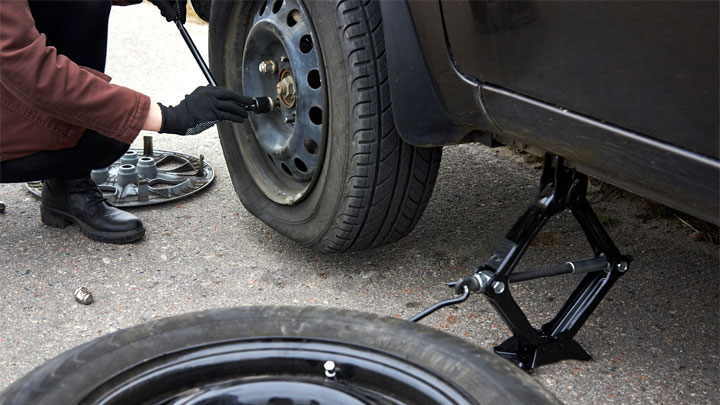
It is always best to expect the unexpected. This proves especially true during the daily commute. Without fail, at some point, every car owner will experience a flat tire.
Overcoming this scenario requires you to be familiar with the installation of your car’s spare and its limitations. It is better to have learned this skill and not needed it, than to need it, and have not learned it.
#3 – Keep Money Available For Repairs
At one point or another, every vehicle will require repair to one degree or another. It is in a car owner’s best interest to prepare for such situations by having a little spare cash available to address such situations.
Putting together a rainy-day fund of this type allows repairs to be addressed thoroughly, and in a timely manner, without causing excess stress or financial hardship.
Start by setting aside $30-$50 a month (or whatever amount you’re comfortable with) and keep it in a hidden envelope or separate bank account. The total amount in this fund will grow quicker than you think. You can even take it a step further and forgo the expensive aftermarket warranty by saving money this way for future repairs.
See Also: Received a Motor Vehicle Services Notice? (Don’t Get Scammed)
#4 – Take Things Easy

While a vehicle is certainly made to get you from point A to point B, it doesn’t always have to be at a dead run. If you are an “all throttle, or all brake” type of driver, don’t expect your vehicle to hold up as well as it could have.
If you’re wondering why you’re needing to replace your tires or brakes more often than others you know, it’s probably your driving.
#5 – Maintenance Is KEY
Like any piece of equipment, a vehicle must be properly maintained to meet the full needs of its owner. Vehicles need TLC and should be serviced in accordance with manufacturer recommendations.
Oil changes are an obvious one but changing your air filter, brake pads, and timing belt when needed are just as important. Failing to maintain your vehicle in this manner can consequently reduce its overall service life and cost you a lot more money, time, and frustration down the road.
#6 – Don’t Drive With Two Feet (Automatic)
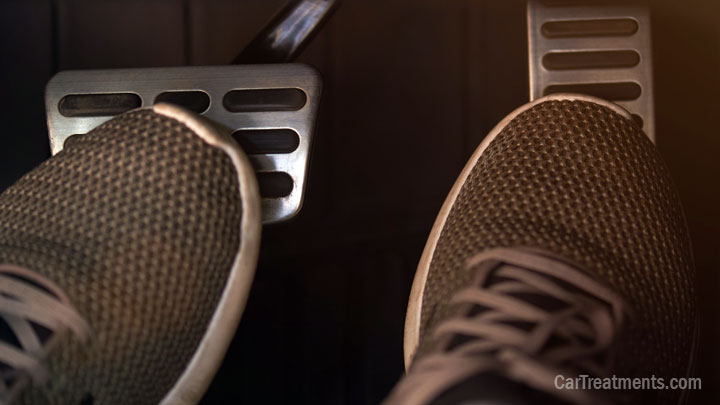
When driving an automatic, the use of two feet to manipulate a vehicle’s pedals isn’t a good idea (unless you’re a professional race car driver).
Driving with both feet practically encourages premature brake wear, as on foot stays positioned on the brake pedal at all times. Alternatively, you should drive with your left foot firmly planted on the dead pedal or floor board, while their right foot operates the gas/brake.
#7 – Stop Driving If Temps Climb or Pressures Fall
As a driver, you should always heed the warnings presented by your vehicle. This might come in the case of sudden overheating or a rapid loss of lubricating oil pressure.
If either of these two situations arises, your should discontinue driving at the first opportunity to safely pull off the roadway. Your car provides important cues to avert catastrophes, so react appropriately.
#8 – Mind Your Tire

Learn to periodically inspect your vehicle’s tires and interpret what their wear is trying to tell you. Tire replacement is not cheap, and failing to recognize signs of uneven tire wear can quickly prove costly.
Poor alignment, improper inflation, and advanced steering/suspension component wear can all take their toll on a vehicle’s tires.
#9 – Don’t Skimp On Headlight Use
The use of your vehicle’s headlights is not just to benefit you, but also to alert other drivers of your presence. This is especially true in low visibility situations, such as during poor weather, or in the time periods around dawn and dusk.
When in doubt, always opt for the use of your vehicle’s headlights. Nobody’s going to be annoyed by you using them at any time (unless you’ve got your high beams on).
#10 – Don’t Ignore a Check Engine Light
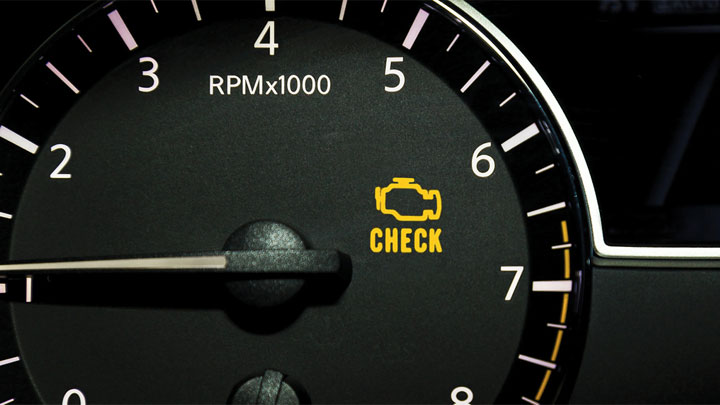
You should never ignore the sudden illumination of a vehicle’s check engine light. If this light is on or flashing, it indicates that your vehicle is not operating as it should, therefore requiring attention.
While the severity of the issue at hand might initially be quite minor, it might worsen with time if not addressed. Use an OBD2 scanner to check what’s causing the check engine light to come on or take it to mechanic for them to scan.
#11 – Corrosion Is Your Battery’s Enemy
A little periodic maintenance can do wonders for your vehicle’s battery, and prevent you from becoming stranded in a parking lot. As a car battery ages, it’s not uncommon for corrosion to build up on its terminals.
As a result, continuity between your vehicle’s battery and its corresponding cables is negatively impacted. Cleaning off this corrosion is easier and safer than you think.
#12 – Change Your Wiper Blades Periodically

Another safety item worthy of consideration is your vehicle’s wipers. Even if not regularly used, a car’s wiper blades can dry rot, crack, or tear, providing less than favorable use when you need them most.
At the very least, a vehicle’s wipers should be checked for optimal functionality at least once per month.
#13 – Use Only Specified Floor Mats
Never use any cloth or material in your vehicle’s floor pans that is not intended for use as a floor mat. Believe it or not, the use of items such as rugs (yes, people use them) as an alternative to floor mats can prove dangerous.
These loose items can get bound up beneath a vehicle’s brake or accelerator pedal, posing a definite safety hazard. If you want to upgrade your carpet mats to more rugged, waterproof mats, companies like Weathertech and Husky Liners make great quality custom fit floor mats.
#14 – Avoid Placing Too Much On Your Key Ring
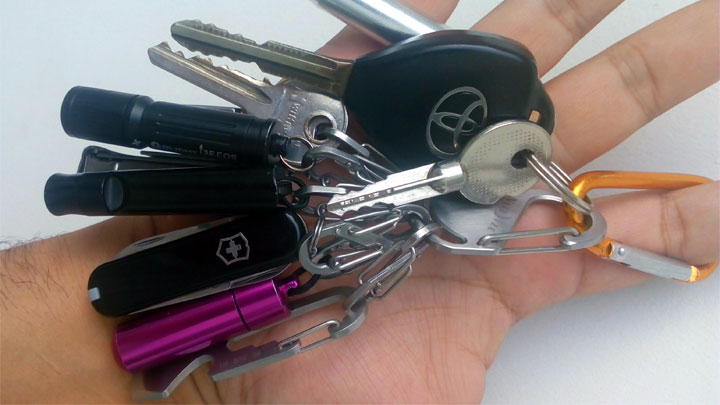
While you might be tempted to fill your key ring full of adornments and keepsakes, doing so can have quite a negative effect.
If this extra weight is allowed to dangle from your ignition cylinder while driving, undue wear and tear often arises. This, in turn, can cause premature failure of the ignition cylinder as a whole, thereby necessitating replacement.
#15 – Keep Jumper Cables On-Hand
You never know when you or someone around you will be faced with a dead battery, so having a set of jumper cables readily available to give you a jump start is good insurance. This eliminates the predicament of finding yourself stranded without the means to start your car.
Jumper cables can be discreetly stored beneath a seat, or within a car’s trunk, and can usually be purchased for a rather reasonable price. There’s really no excuse for being caught out without a set of cables on hand.
#16 – Invest In a Quality Floor Jack and Stands

If you intend to do any vehicle maintenance or repairs yourself, you should seriously consider investing in a sturdy hydraulic floor jack and set of jack stands.
These devices provide invaluable stability and reduce the risks associated with improperly secured vehicles. There can be grave consequences when cheap equipment fails, resulting in sudden and unexpected vehicle collapse and injury. While you may be able to skimp or cut corners on some things, this isn’t one of them.
#17 – Adjust Your Mirrors “Before” Driving
Your car mirrors play a critical role in allowing you to avoid collisions as a whole, by visualizing your surroundings in vivid clarity. However, this only works if your mirrors are adjusted properly.
These adjustments should be made before departing, as trying to adjust your mirrors while driving is a safety hazard in itself. So spend a few seconds to have your mirrors in the ideal positions so you actually see that motorcycle in your blind spot or that car next to you when changing lanes.
#18 – Leave Ample Stopping Distance
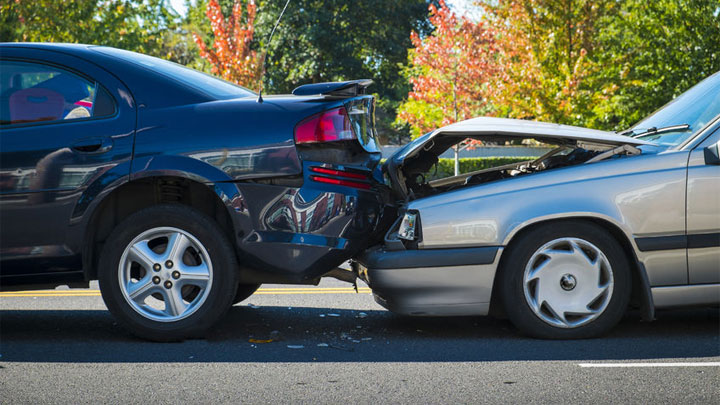
Tailgating is never a good idea. Not only is it rude, but it’s also potentially hazardous. Some even don’t realize they’re doing it. The higher your speed of travel, the greater your stopping distance becomes.
Sure, it can be annoying being stuck behind a slowpoke. But getting them to speed up isn’t your job. Leave a nice cushion between you and the next car, and expand that bubble if you’re going faster. The extra space gives you time to react and avoids tempting fate.
#19 – Drive Defensively
You never know what a fellow motorist will do, leaving little possible way to predict all of the potential hazards that you may encounter during your daily commute. That’s why driving defensively is so key.
Someone could switch lanes without looking or slam on their brakes for no reason. Assume every other driver doesn’t really know what they’re doing. It’s harsh, but it will make you more aware of your surroundings and leave yourself a lane of escape, should another driver make an unexpected move.
#20 – Take Safety Serious
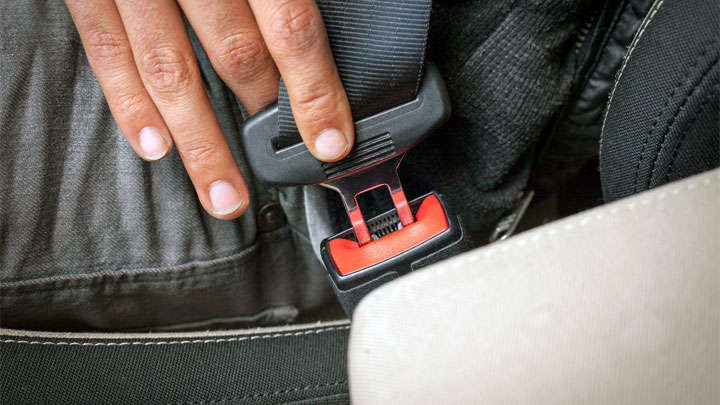
Cars these days are far safer than those of yesteryear thanks to savvy engineers. They’ve rolled out high-tech features to protect us in crashes and prevent accidents in the first place.
But all those airbags and assists don’t mean a thing if we don’t do our part too. Buckling up and staying focused on the road are still key for staying out of harm’s way. And no phone text or song is worth taking your eyes off the road since that’s how fender benders happen.
- 5 Symptoms of an EVAP Leak (and Repair Cost) - Apr 27, 2024
- P0480 Code (Symptoms, Causes, and How to Fix) - Apr 19, 2024
- Car Temperature Gauge Stopped Working? (Here’s Why) - Apr 15, 2024
